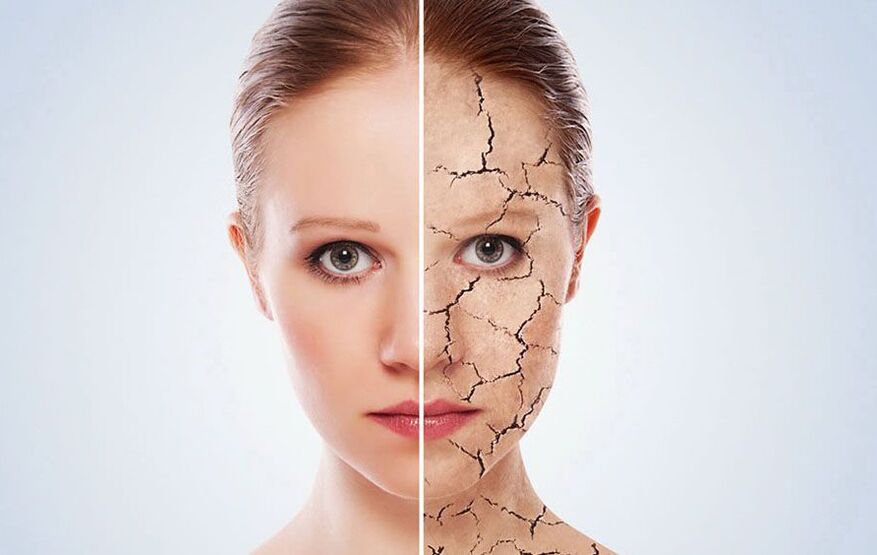
Signs of age-related skin changes
- Drying and flaking: Over time, skin can become dehydrated, thin, and become "parchment-like";
- wrinkle: first superficial, barely noticeable, then more obvious facial expressions and most unpleasant deep expressions;
- Decreased hardness and elasticity: The facial features appear pointed or droopy;
- dull: Even with proper care, the face will lose its freshness over time and look tired;
- dark spotsIts appearance is the final "alarm call" that we urgently need to think about to fight against the rapid aging of the skin.
Skin changes with age
- The moisture content decreases, resulting in a decrease in elasticity;
- Less collagen and elastin fibers are formed, creating an elastic skin "framework" and preventing wrinkles from deepening;
- Decreased surface renewal ability, resulting in dull skin tone and enlarged pores;
- Pigment cells (melanocytes) "aggregate", resulting in pigmentation disorders.
Four types of facial skin aging
- tired: Swelling, pale complexion, obvious nasolabial folds, drooping corners of the mouth;
- wrinkle: Increased dryness, "crow's feet", wrinkled eyelids, "wrinkled" upper lip and chin;
- deformation: Smooth or "swollen" oval face, double chin, "bulldog" cheeks, excess fat in the eyelid area;
- Comprehensive aging: The severity of the first three types of manifestations is roughly the same.


























































